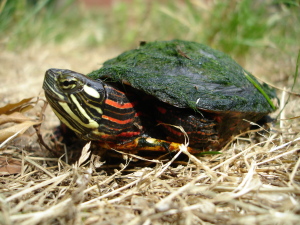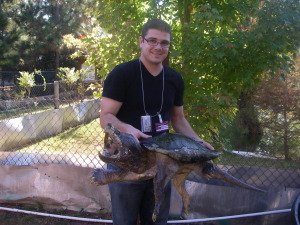Thoughtful golf course design can make turtles feel at home. Listen up:

Painted turtles bring color to the greenery. (via E. Eskew)
You may not appreciate water hazards during your game—but for turtles they can be home sweet home.
The way a golf course or country club is designed and managed makes a difference. Researchers found that more turtles make use of greenway ponds when there is less adjacent residential development.
University of Kentucky herpetologist Steven Price explains, “So when you have the female turtle in a golf course pond, she goes up, she leaves the pond, and she can find a nesting site without having to cross a road, without having to go through somebody’s yard.”
If golf courses can be designed to allow for more natural landscapes nearby, then seeing turtles and other wildlife may become par for the course!
Get schooled:
- Read National Geographic’s article, “Turtles Flourishing in Golf Course Ponds”
- Check out the Journal of Herpetology’s assessment of turtle abundances to learn how golf courses may provide suitable habitats for wetland-dependent animals
- Learn more about turtle conservation on golf courses in urban areas via Davidson College Herpetology Lab
The fine print:
- This segment was produced in partnership with Cornell’s Atkinson Center for a Sustainable Future





